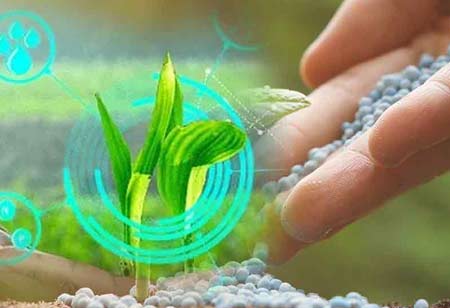Thank you for Subscribing to Agri Business Review Weekly Brief
What You Need to Know About Precision Agriculture and Food Safety Interactions?
Precision agriculture (PA) uses technology to manage agricultural and livestock output better, boosting global food security.

By
Agri Business Review | Saturday, September 24, 2022
Stay ahead of the industry with exclusive feature stories on the top companies, expert insights and the latest news delivered straight to your inbox. Subscribe today.
Precision agriculture can better inform and alter the entire food supply-demand chain, unlike its prior breakthroughs, which were primarily production-related.
FREMONT, CA: Precision agriculture (PA) uses technology to manage agricultural and livestock output better, boosting global food security. Precision agriculture can enhance resource allocation for pesticides, fertilizers, water, feed, and labor, increase output, and reduce agricultural production's environmental impact. Compared to other agricultural advances, PA uptake has been slower and less uniform. Modern PA management systems are rare on small, low-mechanization farms, which produce much of the world's food and are common in food-insecure regions.
Food availability
Food availability is the population's food supply. Weather conditions, farm management techniques, and climate change affect food supply networks. Global, regional, and local supply chains control food production, distribution, and exchange. Agricultural markets' food supply is the main issue. Precision agriculture increases crop production input efficiency, scale effects, yields, and yield stability in the producing area of the supply chain. More efficient crop inputs increase environmental productivity and farmers' net returns.
Food access
Food access affects household food security mostly on demand. Direct access to food depends on the availability of land and the ability to grow enough food to maintain a rural household. Food access for urban families involves retail distribution systems. Interdependence has increased as the number of people working on farms has declined, undermining food security. The most efficient, least expensive field-to-table food networks have little inventory flexibility and can be disrupted.
Stability
Food availability over time is food stability. Weather or market disturbances can cause food instability. Poverty, climate change, and poor land management can make it chronic. Chronic food instability impacts developing country rural areas and impoverished urban communities. Precision agriculture's capacity to better match crop inputs for more even production across geography and time and its effect on agricultural supply chain stability provide food stability across time. Digital farm advances are increasingly being integrated into the agricultural supply chain. Linking agricultural production data with supply chain operations could lower food costs and increase delivery efficiency.
Food utilization
Practical food usage depends on household knowledge of food storage and processing, nutrition, and childcare. Precision agriculture doesn't currently contribute to food security, but it could. Information technology that allows a producer to harvest based on quality qualities may assist farmers in benefiting from quality premiums and supplying higher-quality food options to suit customers' nutritional needs. Better supply chain tracking (such as storage temperatures) or sensors in food goods that detect viruses or spoiling qualities like CO2 may extend "use by" dates, reducing food waste.





